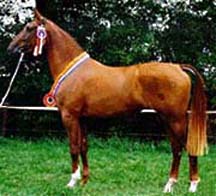Gelderlander
Gelderland
Tue, 26th November, 2024 - 10:34 pm GMT
Sponsor Ads:

Alternative Name
GelderlandBasic Info
The Gelderland is chestnut, bay, black or gray, often with white markings on the face and legs. Occasionally skewbalds are found. The head is long and somewhat flat with a straight profile, large expressive eyes and nicely set, mobile ears. The neck is well shaped and muscular, usually with an arch. Withers are usually prominent and broad, merging into the line of the back; the back is straight and long; the croup is short and usually flat; the tail set high; the chest full and deep; the shoulder sloped and long. The legs are muscular with a long forearm and strong, broad joints; the hooves are broad and strong. The Gelderland stands between 15.2 to 16 hands
Health
N/AHabitat
N/ABehavior
Use : Harness, riding. These days mainly used as a carriage horse.Origin
NetherlandsHistory
The Gelderland, also known as the Gelderlander, is a warmblood horse which originated in the sandy, mid-eastern province of the same name in theNetherlands. Gelderland horses trace their ancestry to native mares of the Gelderland province who where crossed with Andalusian, Neapolitan, Norman, Norfolk Roadster and Holstein stallions. In the nineteenth century East Friesian, Oldenburg, Hackney and Thoroughbred blood was introduced. Gelderlanders were originally bred as utility horses, to work the land as well as provide transportation. Today, the Gelderland is an elegant carriage horse and also possesses talent as a show jumper. Its action is flowing and the breed has an effective high-stepping trot. The Gelderland breed has been absorbed into the Dutch Warmblood breed since the late 1960s and has not been officially bred since that time except for a few breeders who still maintain this old breed. Gelderland horses have made a major contribution to the quality and style of the Dutch Warmblood and Dutch Tuigpaard, a showy carriage horse.Common Foods
grassSponsor Ads:
"So much has been lost, so much forgotton. So much pain, so much blood, and for what, I wonder? The past tempts us, the present confuses us, and the future frightens us. And out lives slip away, moment by moment, lost in that vast terrible inbetween. But there is still time to sieze that one last fragile moment. To choose something better. To make a differance." -- Centauri Emperor on last visit to B5 - Babylon 5
Gelderlander
Coded by: BGID® | ALL RIGHTS RESERVED Copyright © 2000-2024
Disclaimer | Privacy | Report Errors / Contact | Credits
















